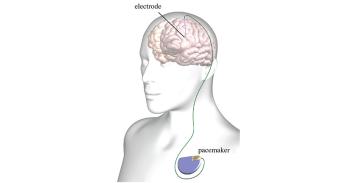
As you’re driving to work along a busy road, your eyes on the traffic lights ahead, hoping they won’t turn to red, you pass signs warning of roadworks, ads on bus shelters… Suddenly a dog runs out in front of you. What are your chances of seeing it before it’s too late?
As you’re driving to work along a busy road, your eyes on the traffic lights ahead, hoping they won’t turn to red, you pass signs warning of roadworks, ads on bus shelters… Suddenly a dog runs out in front of you. What are your chances of seeing it before it’s too late?
When objects in our peripheral vision are surrounded by visual clutter, a phenomenon known as ‘visual crowding’ hinders our ability to make sense of what we see
Will Harrison
Even with 20/20 vision in broad daylight on a clear day, our peripheral vision can be surprisingly poor, particularly when the scene in front of us is cluttered. Now, scientists at the University of Cambridge, UK, Northeastern University, Boston, USA, and Queensland Brain Institute, Brisbane, Australia, believe they are a step closer to understanding why this is.
“When objects in our peripheral vision are surrounded by visual clutter, a phenomenon known as ‘visual crowding’ hinders our ability to make sense of what we see,” explains Dr Will Harrison from the University of Cambridge. “Visual crowding is ubiquitous in natural scenes and affects virtually all everyday tasks, including reading, driving and interacting with the environment. But this failure of vision isn’t a problem with our eyes – it represents a processing limit of the brain.”
Image: Focus on the green spot. Without moving your eyes, you should be able to identify the letter ‘A’ on the left side of the display; the same letter is almost impossible to see on the right side of the display.
In a study published today in the journal Current Biology, Dr Harrison and Professor Peter Bex from Northeastern University have shed new light on how constraints in the brain limit our peripheral vision.
The researchers showed volunteers a series of images with differing levels of visual crowding. To make sure they kept their eyes still, the volunteers were asked to focus on a dot. Beside the dot was a broken ring, like the letter ‘C’, but with the gap positioned at a random orientation. The volunteers were asked to estimate the angle at which the gap appeared by freely rotating a second C so that it matched the target as closely as possible. This helped the researchers to measure each individual’s uncrowded perceptual acuity.
To measure crowded perception in the next stage, the C was surrounded by an additional, larger C – a ‘distractor’ – at different orientations and/or distances to the target C. The volunteers again rotated a second C until they thought it matched the target. Whereas previous studies looking at crowding had only given binary results – was the observer right or wrong? – this new method enabled the researchers to quantify crowding as a continuous experience.
The researchers found that when the angle of the target and distractor were similar, observers tended to choose an average of the two orientations. When the target and distractor angles were quite different, observers tended to choose either the correct orientation (that of the target) or they mistakenly reported the orientation of the distractor. However, this effect depended on the target and distractor being positioned very closely together – reports were not influenced by a distractor positioned a large distance away from the target.
Combining the findings with a computational model of how visual neurons represent the visual field, Dr Harrison and Professor Bex found that problems in identifying objects in our peripheral vision are due primarily to a combination of two factors. First, in a crowded scene, our visual resolution is degraded, meaning that we become less precise at locating an object’s detail. Second, we confuse which detail belongs to which object, to the extent that part of one object can appear ‘swapped’ with a part of a different object. Importantly, their model suggests that both factors are caused by the same underlying brain mechanism.
Dr Harrison believes the findings may have implications for quantifying and treating vision disorders, such as age-related macular degeneration (AMD). A large portion of the elderly population suffers from AMD, which causes debilitating central blindness. The loss of high-resolution central vision forces AMD sufferers to rely solely on peripheral vision, which is very poor due to visual crowding.
“We hope that in future it may be possible to adapt our methods to quantify the degree to which patients with AMD are visually-impaired,” explains Dr Harrison. “At the moment, it can be difficult to quantify the extent or severity of their visual deficits. Our method would allow a careful examination of the function of AMD patients’ remaining vision, which could in turn lead to better rehabilitation techniques down the track.”
The research was funded by the National Institutes of Health, USA, and the National Health and Medical Research Council of Australia.
Reference
William J Harrison and Peter J Bex. A unifying model of orientation crowding in peripheral vision. Current Biology; 25 Nov 2015

The text in this work is licensed under a Creative Commons Attribution 4.0 International License. For image use please see separate credits above.




